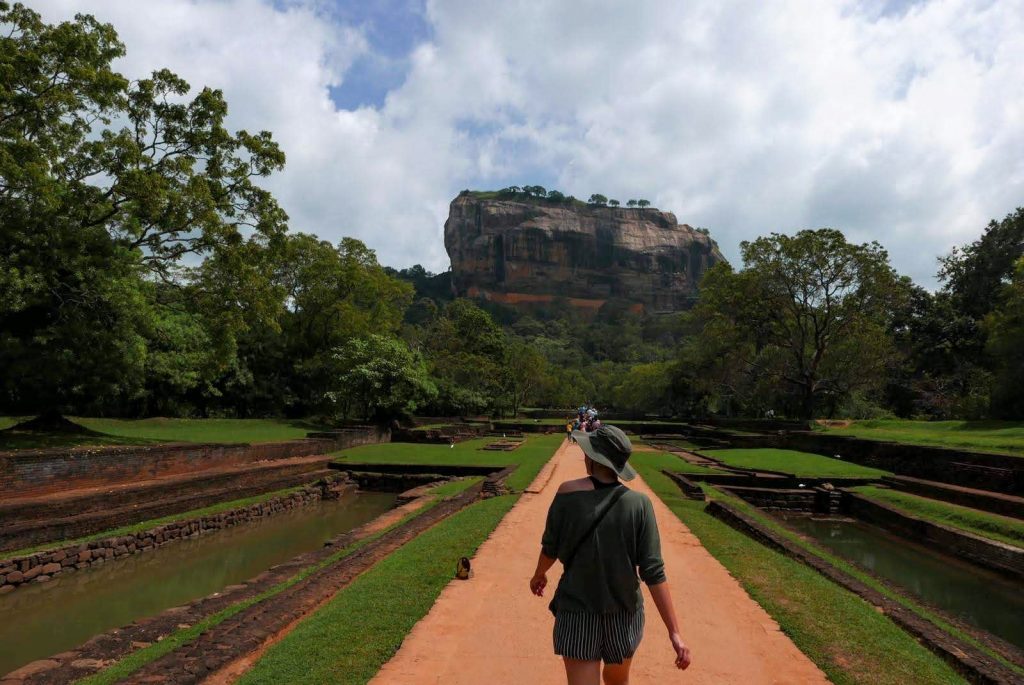Foreigner prices can be found at tourist attractions all over the world – and the ethos behind it makes sense. You have more money so you pay more. It happens in South America, the Middle East and in African countries. But in Asia – a continent containing some of the most touristed countries on earth – it may have just gone too far.
Places like Myanmar have only recently opened up for foreign tourism (despite ongoing conflicts) and their foreigner prices have started quite reasonable. They used to charge foreigners around $1 to enter temples (they were previously free), which gradually went up while we were there, sometimes to $3. Now that’s it’s become so popular, commissions are rising – but it is still fine in the grand scheme of things.
Fast forward to Sri Lanka, a majorly touristed country for many years, where the main historical heritage sites are Sigiriya Rock, as well as the ancient cities of Anuradhapura and Polonnaruwa.
The entrance fees to see all three are currently $80 just for the entry alone. While we went to Sigiriya Rock and Polonnaruwa, we chose the mountain of Mihintale over Anuradhapura. In our opinion, Anuradhapura just wasn’t impressive enough to warrant a $25 entrance fee.
I do love to see everything, but I know many travellers who refuse to see things due to the inflated prices. I found this a lot in India where backpackers go for the cheap prices so they won’t pay to see ancient temples or other sites. Ultimately, people will choose to go to places that they can afford and avoid those they can’t.
This has a knock-on effect for everyone – people who run juice stands, guest houses, restaurants, masseurs and so on and so forth. If the sights of Sri Lanka get too expensive, people will go to neighbouring countries as their government push foreigner prices to the absolute limit.
Richer tourists will still see the expensive sights, but they are much less likely to spend money on local businesses than backpackers, as they’re more likely to be on tours or staying in resorts.
One disastrous example of unfair pricing is the Taj Mahal, where the new plans introduced at the end of 2018, meant the price was increased fivefold for Indian tourists. It went from 50 rupees to 250 rupees which is profoundly unfair. Naturally, the majority of tourists are Indian, so the government are essentially trying to price many people out to reduce footfall. They’re also doing it to raise money to reduce the massive environmental damage to the Taj Mahal from air and water pollution.
They can get more money from foreigners so that’s who they want to attract, instead of the people whose cultural heritage is represented in the Taj. The price only went up 15% for foreigners which means it is now $20, so ten times the new domestic price of $2.20.
I don’t disagree with foreigner prices in developing countries – not by a long stretch as I believe that history and culture should be preserved, which costs money. If you’re going to a country, you need to give to it as much as you take from it.
Many holidaymakers (but not necessarily backpackers) feel the same about tiered pricing, so it’s about consistency and not feeling ripped off. We need better transparency, so it doesn’t seem like some authorities made up their prices based on an inflated idea of what attractions cost around the world or what people will pay.
The frustrating thing about the tiered pricing system is that there is no rhyme or reason to it. I think that the solution may be to decide a percentage of the local price and stick to it. Do foreigners pay 50% more? 200% more? Make a calculation about what is a fair price depending on the currency, and use it across attractions.
Angkor Wat is now $37 for one day ticket, this isn’t so bad until you realise that only half of that money apparently goes towards the communities that live around Siem Reap. If people knew that it was all going for restoration and communities then they wouldn’t have a problem with that.
At the moment, it’s getting slightly out of control in some places and it is negatively affecting the experiences that tourists might have. There are some places that are raising prices with alarming frequency and it feels unnecessary.
In Uganda, the permits to see gorillas are very expensive and this is necessary to protect an incredibly vulnerable species. Paying $30 to see Sigiriya Rock is pretty over the top in my opinion.
I think that breakdowns need to be included on the ticket so you can feel good about your contribution to the place that you’re in. Ultimately, it’s the people with businesses in the area that will suffer if tourism decreases because of the decisions of the authorities and that’s fundamentally unfair.
What do you think about ‘foreigner pricing’ and how do you think it should evolve? Share your thoughts in the comments below!
Pin this for later:
